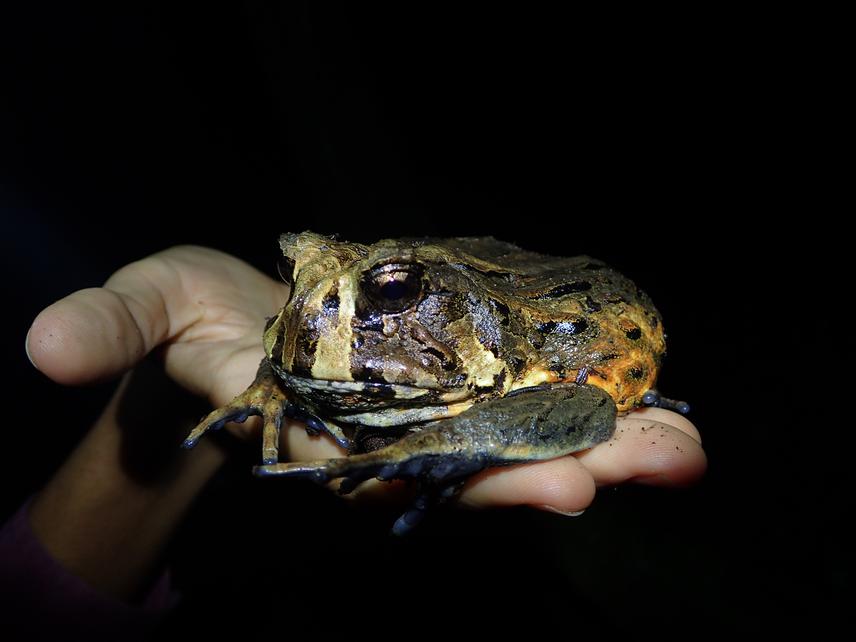José Wagner Ribeiro Junior
The overall goal is to investigate community assembly of stream-dwelling anurans in the Atlantic rainforest by using multi-species occupancy models that account for imperfect detection.

The uncommon Bahia Forest Frog (Macrogenioglottus alipioi).
The researchers have observed, for over three decades, the global decline and extinction of amphibians populations at worrying rates that exceed historical levels. Amphibians are, on average, the most threatened group, with stream-dwelling species experiencing severe declines. According to The IUCN Red List, the Atlantic Forests of southern Brazil has important concentrations of threatened species. Moreover, understanding community assembly structure and dynamics, and its causes is the first step to assess conservation priorities, and develop useful conservation plans. Our major contribution will be to assess quantitatively, taking into account the detection error by hierarchical modelling, the role of both environmental and spatial factors in determining the community structure.
Detection error induces variation that does not correspond to any kind of ecological relevance phenomenon, but arise from a nuisance variation that obscures our capability to infer about ecological process and conservation necessity. To overcome this issue, two models are stated in the hierarchical modelling approach: (i) the ecological process that is usually focus of inference (e.g., abundance, and species occurrence), but generally cannot be observed directly; and (ii) a model for directly observed data that is related with ecological process, but is biased by detection error. Thus, our expectation is produce more accurate models by disentangle sampling noise from ecological parameters of interest pointing out more precisely conservation priorities. For example, there is the question in The IUCN Red List about whether declines reported for Vitreorana eurygnatha, a stream associate species that occurs in our study area, are real or simply an artefact of sampling. We presume that our models will be more confidentially capable to evaluate the occurrence of this and another species in the system, both the population and community level.
The stream-dwelling anurans in the Atlantic rainforest deserves careful attention regarding population declines, however I could perceive a strong gap of researches throughout the literature review of my PhD project for this threatened group. For example, to our knowledge, this is the first quantitative and standardized study with stream-dwelling anurans in the Cantareira-Mantiqueira wildlife corridor, where there is deep priority for amphibians’ conservation in the Atlantic rainforest. Our expectation is produce more accurate models by disentangle sampling noise from ecological parameters of interest highlighting the conservation priorities, and capitalizing on both basic and applied aspects of ecology and conservation of this highly threatened group.